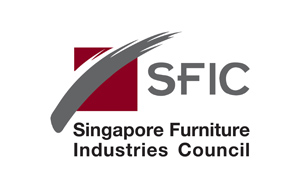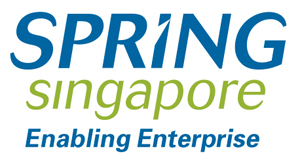 Flávia Linden
Flávia Linden Lisa Dengler
Lisa Dengler Billy Hazel
Billy Hazel Nhi Py
Nhi Py Guiri Uribe
Guiri Uribe
Models present creations on the horseback in Sofia, Bulgaria, Aug. 22, 2010.



 Levi Strauss & Co, a renowned jeans manufacturer of the world has introduced a novel global brand in China recently, wherein models were seen wearing sneakers and high-heeled sandals during the launch. This new brand targets young consumers in booming markets of various countries starting with China, Singapore and South Korea.
Levi Strauss & Co, a renowned jeans manufacturer of the world has introduced a novel global brand in China recently, wherein models were seen wearing sneakers and high-heeled sandals during the launch. This new brand targets young consumers in booming markets of various countries starting with China, Singapore and South Korea.
With this newest incarnation, the brand will get included in ever growing list of companies intending to penetrate fast-growing and youthful market, by offering products matching the taste of Chinese consumers.
The first ever dENIZEN shop of the renowned brand will be set up in Shanghai, later this month. The focus of this new brand will be on the wider segment of Chinese consumers than the traditional Levis cutsomer.
As per the President of Levi Strauss’s Asia-Pacific division, Mr. Aaron Boey, a new group of consumers are noticeable in past few years, majority of who, prefer wearing stylish clothing, but at affordable pricing.
A brand shoe store opened on Taobao Mall, the largest B2C online shopping mall in China, three footwear companies of Aokang, Kangnai and Red Dragonfly in Wenzhou city launch their latest fashion styles on the store, usually shoes sold online are out of fashion at low price, but shoe sold in this brand shoe store have the same fashion styles as in retail stores, but prices are more favorable than that in retail stores, services and quality are dependable.
The store responsible person said online store can show thousands of fashion shoe styles that provides a wide range of choices for buyers, no retail store could have such room to display thousands of samples like the online store.
According to official statistic the footwear's sale on Taobao Mall has exceeded 7.6 billion yuan in the first seven months.
The appraisal for the innovation award started from March of 2010, 19 scientific and technical items registered the activity. After reviewing and appraisal by experts the finalist items have been proposed to the assessment committee on August 6. According to committee’s regulation these qualified items will be circulated and announced for public comments. The notification period started from August 9 to 23, any comments and dissents will be judged and verified by the assessment committee.
Final result will be announced on the Fourth Plenary Session of CLIA’s Six Council that will take place on August 31, the honor will be awarded to winners during the conference.
At present, the official of Lhasa Carpet Co., Ltd, which is the leader company of Tibetan Carpet enterprises, said that in the support of the Tibet government they begin to annex, recombine and unite the Tibetan carpet manufacturing enterprises to establish the Tibetan carpet Group. They plan to invest 14,600,000 Yuan to build the industrial park of Tibetan carpet in Lhasa economic development area, and also plan to invest more than 12 million yuan to build The Sample Base of Tibetan carpet, The Weaving Base of Traditional carpet and so on, for both sightseeing and disseminating the carpet culture.
According to presentations, the handmade carpet can be divided into eight major production processes: spinning- dyeing- pattern design-weaving carpet-washing carpet-cutting pattern- trimming. After the scientific washing, the carpet will be soft and bright as the satin and can defend the moth-eaten. Cutting pattern can make the carpet sharp in figure and clear, added with the color, it can have the art effort as relievo.
China International Trade Fair for Textiles and Accessories to be held in Shanghai New International Exhibition Center from 24th, August to 26th, August.
This exhibition is organized by China National Apparel and Textile Council, China Hometex Industry Association and Mess Frankfurt Hong Kong. The exhibition area this year increases to 115,000 square meters with 10 exhibition halls. 1017 exhibition enterprises from Italy, Japan, Portugal, and China and so on will display their products here.
At this year's exhibition, more Chinese elements will be displayed. At the non-material cultural heritage hall, eight companies will show their selected products including Blue calico, Brocade and Dong Brocade and so on. Organizers of this exhibition will also provide trainings for exhibitors so that these exhibitors can improve their design and market development.
Since economy recovers around the world, the number of foreign exhibition enterprises surges. Famous companies including Diane Harrison Designs, Dictitex Decor Exports, Dykon A/S and so on all will appear at this exhibition. What's more, 23 foreign designers will display their creations at designers salon.
In order to promote communication between Chinese hometex designers and foreign designers, all kinds of forums will be held during this trade fair. Six top hometex designers from Italy, USA, France, Korea, China and Hong Kong will represent their design concepts through their creations.
Major manufacturer and seller of dyes and dye intermediates, Bodal Chemicals Ltd., have introduced a unique brand of reactive dyes, called ‘Bodactive’, for the textile industries.
It is a range of reactive dyestuffs that includes various series such as Bodactive BNC, BNC Special, BNC-HE, BHE+, P (Printing), C, CF and ELF. Introduction of the Bodactive range heralds the launching of nano-technology for the first time.
These are the pure and superior quality dyes for textile industry. Bodactive BNC (Bodal Nano Chemistry) Technology is highly effective to gain reproducibility & level dyeing of cellulosic materials, provides latest generation of dyes with the features of high solubility & outstanding high strength.
Molecular structure of each product in this range has been designed according to the economic recipes and right-first time dyeing. Bodactive BNC Special consists of a range of products with specialty chromophores & poly-functional groups. There are independent options for dyers to use Bodactive BNC dyes along with few Bodactive BNC Special dyes.
The manufacturing of Bodactive range of dyes will be carried out at Bodal’s Unit-7, in Padra, near Baroda, Gujarat, which has a advanced manufacturing infrastructure. Such a system offers consistency in production with economy and quality.
Singapore, 20th August 2010 – Singapore Furniture Industries Council (SFIC) and SPRING Singapore will lead a 19-member delegation from 13 Singapore companies/institutions to Scandinavia. The one-week design study mission from 26 August to 4 September 2010 will cover the three key furniture design-led countries of Denmark, Finland and Sweden.


The delegation will visit Aalto University, the leading design education institute in Helsinki, and the Royal Danish Academy of Fine Arts in Denmark, which is the world’s oldest school of architecture and furniture design. Participants will also be given the opportunity to meet representatives from some of the world’s top design manufacturers and retailers, such as Danish furniture company Fritz Hansen and famed Swedish furniture brand OFFECCT. Other highlights in the lineup include the Copenhagen Design Fair, which is Scandinavia’s first broad-based design fair covering furniture, textile, lighting and interior architecture, and the Habitare Fair, which is Finland’s largest furniture and furnishing fair.
“Scandinavia enjoys a long history of design excellence and is famous for its innovative use of emerging technologies and materials. Being able to study the Scandinavian furniture industry first-hand is an invaluable opportunity that will no doubt be very beneficial to the participating companies’ growth in the industry,” said Mission Co-leader, Mr Andrew Pang, Vice Chairman of Design Development Committee, SFIC
As the official representative body for Singapore’s furniture industry, SFIC strives to expose Singapore enterprises to best practices and emerging trends across international design fields.
Over the last five years, Singapore’s furniture industry has experienced a steadily high growth rate of 10% annually, and rapidly gained global popularity. In 2008, it achieved total sales of S$4.9 billion which is 0.92% of the world market share.
“This inaugural furniture design trip to Scandinavia offers Singapore enterprises exposure to top quality practices as well as opportunities to interact with some of the best in class. Through missions such as this, we hope to inspire more in the industry to develop top-class capabilities that will grow our global market share and build worldwide recognition of Singapore furniture companies as a choice provider of quality design-oriented furniture,” said Ms Kee Ai Nah, Director of Lifestyle, SPRING Singapore.
SFIC has been working closely with SPRING Singapore on a series of initiatives aimed at helping players in the Singapore furniture industry improve their competitiveness and strategic advantage through design.
This mission is part of SFIC’s Furniture Design DNA (Develop, Nurture and Accelerate) programme, which is supported by SPRING Singapore. Other key initiatives under the Furniture Design DNA Programme include the Furniture Design Award (FDA), PLATFORM, design forums and workshops. In the spirit of helping members of the local furniture industry expand their scope of knowledge on a global scale, this mission aims to advance the standards and capabilities of our furniture companies and designers.
 Gap Inc. reported earnings per share for the second quarter, which ended July 31, 2010, increased 9 percent to $0.36 per share on a diluted basis, compared with $0.33 per share on a diluted basis last year. Net earnings grew 3 percent to $234 million compared with $228 million for the second quarter last year.
Gap Inc. reported earnings per share for the second quarter, which ended July 31, 2010, increased 9 percent to $0.36 per share on a diluted basis, compared with $0.33 per share on a diluted basis last year. Net earnings grew 3 percent to $234 million compared with $228 million for the second quarter last year.
“Our economic model helped us deliver both sales and earnings growth for the second quarter, while we navigated some challenges along the way,” said Glenn Murphy, chairman and chief executive officer of Gap Inc. “Looking forward, we’re committed to our strategy of growing sales and market share in North America as we also invest in our long-term global and online growth initiatives.”
In the second quarter, Gap Inc. expanded its e-commerce reach from one country to 55 through international shipping, making Old Navy available for the first time to customers outside of North America. In addition, the company expects to launch dedicated e-commerce sites this month in Canada and the United Kingdom. By the end of the year, the company expects to have stores in China, Italy and Australia, which combined with its expanding online and franchise operations, will reach customers in a total of about 80 countries.
Second Quarter Financial Highlights
• Diluted earnings per share increased 9 percent to $0.36 from $0.33 last year.
• Net sales increased 2 percent to $3.32 billion compared with $3.25 billion last year.
• Gross profit grew 2 percent to $1.31 billion compared with $1.29 billion last year.
• Operating margin increased 40 basis points to 12.0 percent compared with 11.6 percent last year. This is the highest second quarter operating margin in a decade.
• About 38 million shares were repurchased for $799 million during the quarter, and a new $750 million share authorization underscores the company’s commitment to returning excess cash to shareholders.
Sales Results
Second quarter net sales were $3.32 billion compared with $3.25 billion for the second quarter last year. The company’s second quarter comparable store sales increased 1 percent compared with a decrease of 8 percent for the second quarter last year. The company’s online sales for the second quarter of fiscal year 2010 increased 15 percent to $258 million compared with $224 million for the second quarter last year.
Additional Results and 2010 Outlook
Earnings per Share
The company reiterated its guidance for fiscal year 2010 diluted earnings per share of $1.77 to $1.82, which represents a 12 to 15 percent increase compared with $1.58 per share last year.
Operating Margin
The company continues to expect that the operating margin for fiscal year 2010 will be about 13 percent.
Share Repurchases
During the first half of fiscal year 2010, the company repurchased about 52 million shares for $1.1 billion.
In a separate release , the company announced that its Board of Directors authorized a new $750 million share repurchase program. This brings the company’s total share repurchase authorizations in fiscal year 2010 to $1.75 billion.
Cash and Cash Equivalents and Short-term Investments
The company ended the second quarter with $1.7 billion in cash and cash equivalents and short-term investments. Year-to-date, free cash flow, defined as net cash provided by operating activities less purchases of property and equipment, was an inflow of $292 million compared with an inflow of $589 million last year. Please see the reconciliation of free cash flow, a non-GAAP financial measure, from the GAAP financial measure in the tables at the end of this release.
Effective Tax Rate
The effective tax rate was 41.2 percent for the second quarter of fiscal year 2010 and 39.3 percent for the first half of fiscal year 2010.
The company continues to expect that the effective tax rate will be about 39 percent for fiscal year 2010.
Inventory
On a year-over-year basis, the company reported that inventory per square foot was up 12 percent at the end of the second quarter of fiscal year 2010. Inventory per square foot at the end of the second quarter was reduced by about 2 percentage points due to a shift in shipping terms with certain vendors. The company shifted terms in response to market conditions that were causing an increase in inventory in transit.
Depreciation and Amortization
The company continues to expect depreciation and amortization expense, net of amortization of lease incentives, for fiscal year 2010 to be about $550 million.
Capital Expenditures
Year-to-date, capital expenditures were $248 million. The company continues to expect fiscal year 2010 capital expenditures to be about $575 million. The increase from fiscal year 2009 is primarily driven by Old Navy store remodels, new international store openings, and the online launch in the United Kingdom and Canada.
Real Estate
During the second quarter of fiscal year 2010, the company opened 10 store locations and closed 19 store locations.
The company ended the second quarter of fiscal year 2010 with 3,076 store locations, and net square footage decreased about 2 percent compared with the second quarter of fiscal year 2009.
Year-to-date, the company has opened 19 stores weighted towards international and closed 38 stores weighted towards Gap brand.
The company continues to expect that it will open about 65 stores, weighted towards international and that it will close about 110 stores, weighted towards Gap brand. In addition, the company continues to expect that net square footage will decrease about 3 percent in fiscal year 2010.
According to the latest figure released by Italian national statistical institute (ISTAT), production of footwear in Italy saw an 1.5% growth in June from early year, this marked the first growth since December 2008. Meanwhile production in clothing sector also showed a 3.2% rising, which was the growth for fourth consecutive month.
The overall industrial production increased by 8.4%, reported by ISTAT.